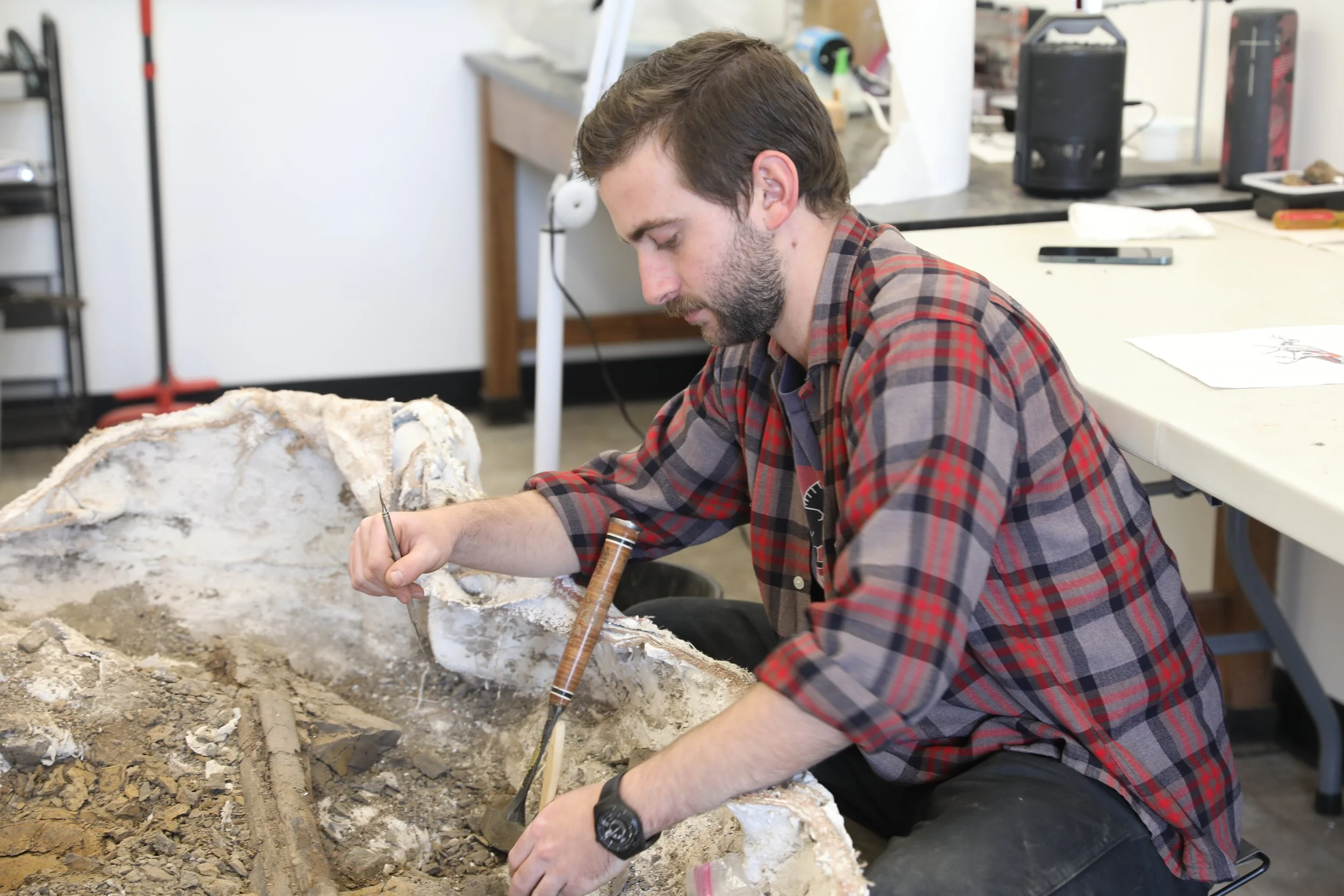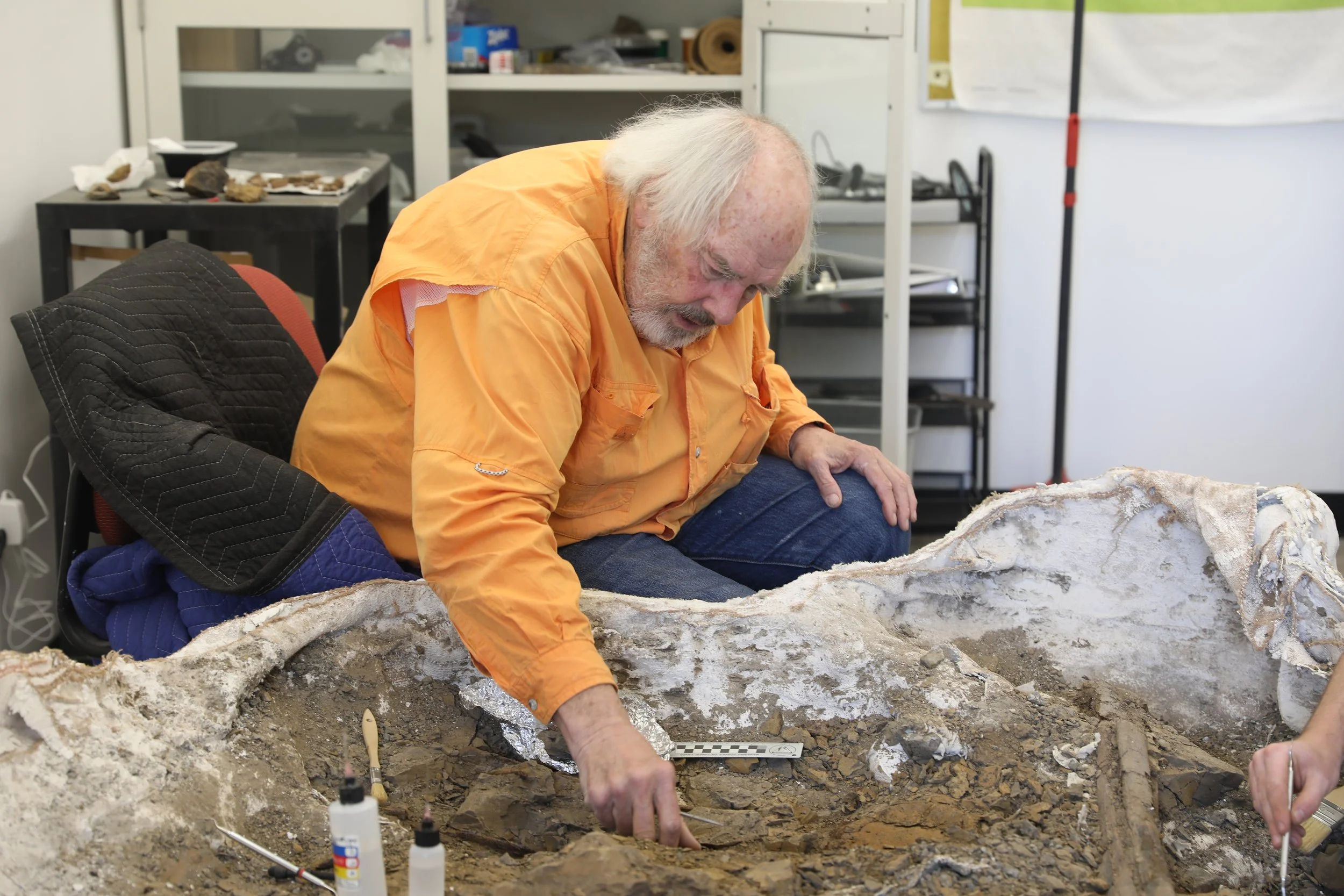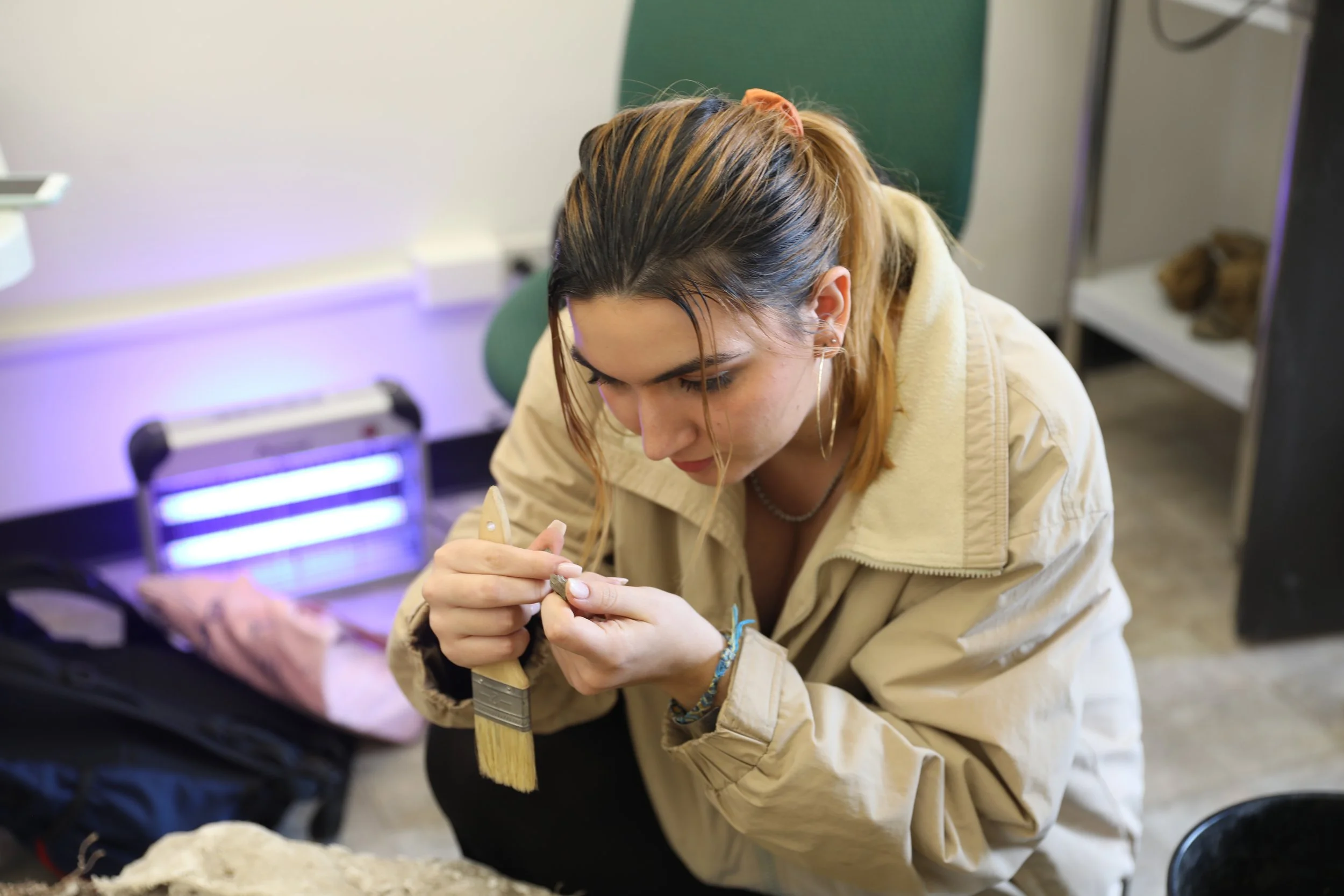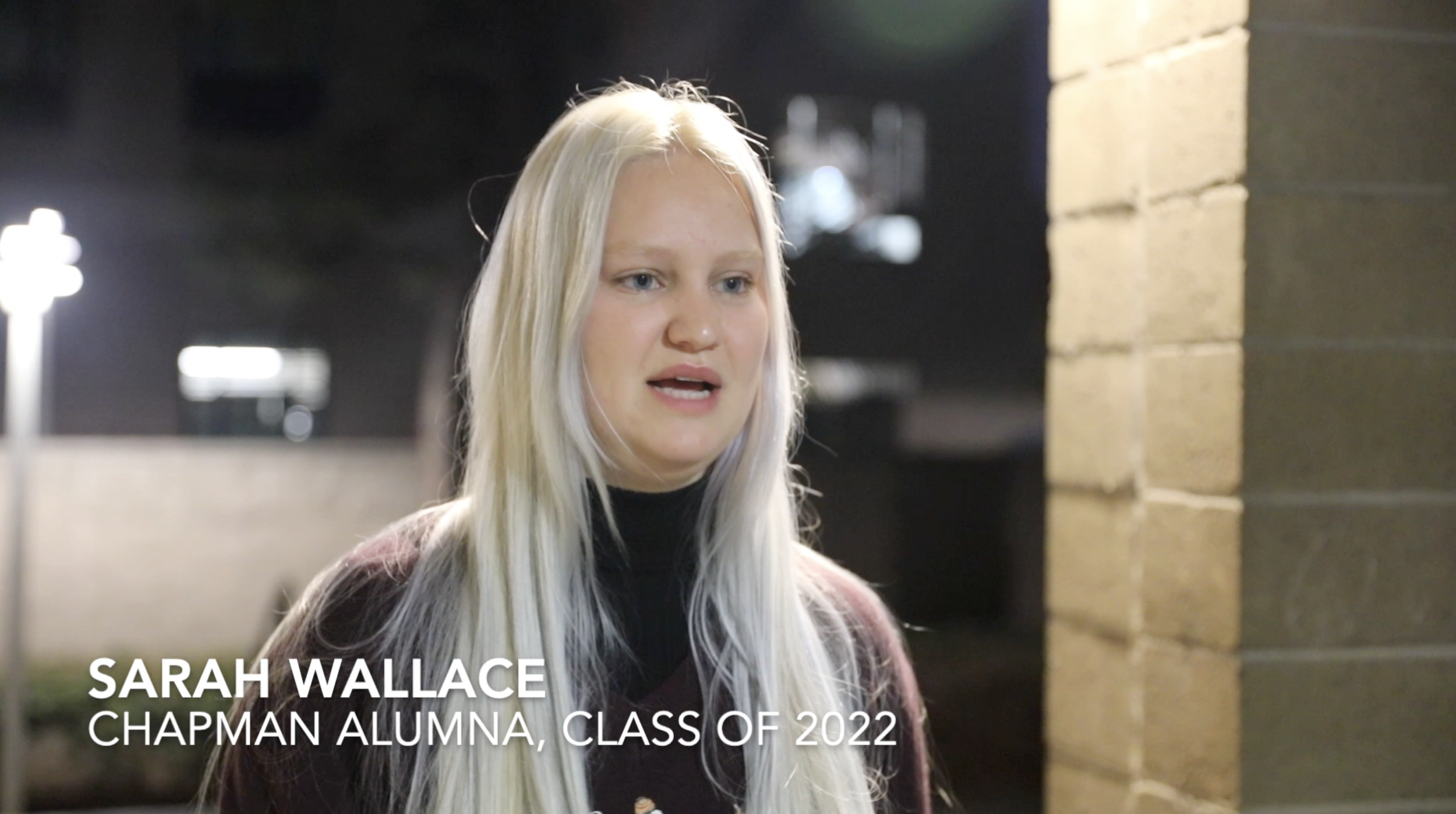Multimedia | 'I found a dinosaur': students prepare 78 million-year-old dinosaur bones
During an excavation trip in northern Montana during the summer of 2021, Chapman alumna Sarah Wallace dreamt of discovering a larger-than-life dinosaur bone. This bone towered above her, at least two stories tall. She woke up and laughed it off, dismissing the dream as nothing more than an overactive imagination.
But by lunch, her dream had actually come true as she had spotted a three-foot pelvic bone sticking out of the ground that belonged to a 78 million-year-old gryposaurus, sparking a multi-year project to excavate the fossil.
“I could feel that the bone kept going for my arm’s length, and so I was like, ‘Um, can someone come here?’” Wallace, who graduated in 2022 with a degree in television writing and production, said. “After a while — we had to walkie someone to come — and they were like, ‘Holy shit.’ That’s when I knew it was a pretty huge deal.”
Harkening back to Wallace’s vision, the bone is now referred to as “dream bone” and will forever be known as Wallace’s discovery.
Wallace and another group of students returned to the dig site during the summer of 2022 to finish excavating the dream bone and the surrounding pelvic bones from the gryposaurus.
Now, the bones reside in the Chapman Paleontological Preparation Lab located in the Hashinger Science Center, where it is currently being prepared by other students who were also part of the excavation.
The trip was an optional aspect of a course within the university’s honors program — “Dinosaurs: in Science and Media.” The class is taught by Jack Horner, a paleontologist who served as the technical advisor for the first five “Jurassic Park” films.
“Jack was out the whole day (I found the bone), and when he came back, he ran up to me and gave me a huge hug,” Wallace said. “He was tearing up.”
Despite her dinosaur-digging days being behind her, Wallace told The Panther her experience at the excavation has given her ideas as she enters the film industry.
“Since coming from that, I’ve had a lot of ideas for stories that I would love to incorporate into my writing when I step into the industry,” Wallace said. “It’s really fun to be in a job interview, and they’re like, ‘Tell me something about yourself,’ and you get to be like, ‘Well, I found a dinosaur.’”
While paleontology isn’t Wallace’s passion, she said she learned the joy of saying “yes” to certain opportunities and encourages others to do the same.
“I do not feel like you need to be a paleontologist to dig up bones,” Wallace said. “If you’re interested in it, totally check it out. Personally, it’s not my strong suit. I’m not good at anatomy. I don’t know all the little bones and everything, but I do feel like this experience has taught me leadership. It’s brought me incredible friends (and) incredible experiences, and it’s taught me that you can literally do anything if you say yes to the right opportunity. Saying yes can bring you places you never thought you would ever be.”
The dinosaur is in the hands of Horner and current students who work in the lab. Each semester, Horner, who has been excavating at the Montana site since 1975, invites his students to attend the dinosaur dig trip every year.
“Nobody has a clue how you find a dinosaur, and when you see how it's done, it’s life-changing sometimes,” Horner said. “It’s really quite something… I can’t even begin to tell you how exciting it is to be digging through rock and run into a dinosaur bone and know that you’re looking at a part of an animal that died 78 million years ago. It’s extraordinary.”
Senior screen acting major Ben Rotenberg and senior broadcast journalism and documentary Amalie Seyffert are two research assistants and preparators that worked to recover the bones embedded in rock. Now, they have moved onto the gluing stage.
“We are in the very long and slow process of removing each individual fragment of bone, cleaning it and gluing it back together with its brothers and sisters,” Rotenberg said.
A self-proclaimed dinosaur lover, Rotenberg said working on the fossils have fulfilled his childhood dreams and even inspired him to completely shift career paths. He recently committed to the University of Washington to get his master’s in museum studies, a three-year graduate program.
“I just wanted to do whatever I could to continue this work,” Rotenberg said. “I’m not a science student, so a Ph.D. or a master’s in paleontology wasn’t realistic, but I love working in these labs, and I love working with fossils and in collections. The museum studies programs offers me everything I want to get out of that work.”
While the dinosaur bones will not be completely finished by the end of this semester, there’s still a lot in store for the 78 million-year-old fossils. After the gluing process is finished, the lab workers will use the bones to create molds and then create casts to replicate the fossils.
The dinosaur lab will also be working with Schmid College to scan and 3D print some of the bones. Eventually, when all the work is finished, the bones will be displayed at the University of Washington’s Burke Museum of Natural History and Culture.
"It’s all very serendipitous that I will hopefully continue (to) be able to continue working on this very same dinosaur in a few years to come at a different university,” Rotenberg said.
Horner plans to take another group of students back to Montana this upcoming summer to see if they can find any more bones from the same gryposaurus.
“We’re hoping to go back next summer and look for it, but there’s no way to tell,” Horner said. “We’ll excavate around the area where we were. We may find (the rest of the dinosaur), we may not. There’s no way to predict whether we’ll find it.”
More about the dinosaur: Video | Digging dinosaur bones: students return from summer trip with fossils






